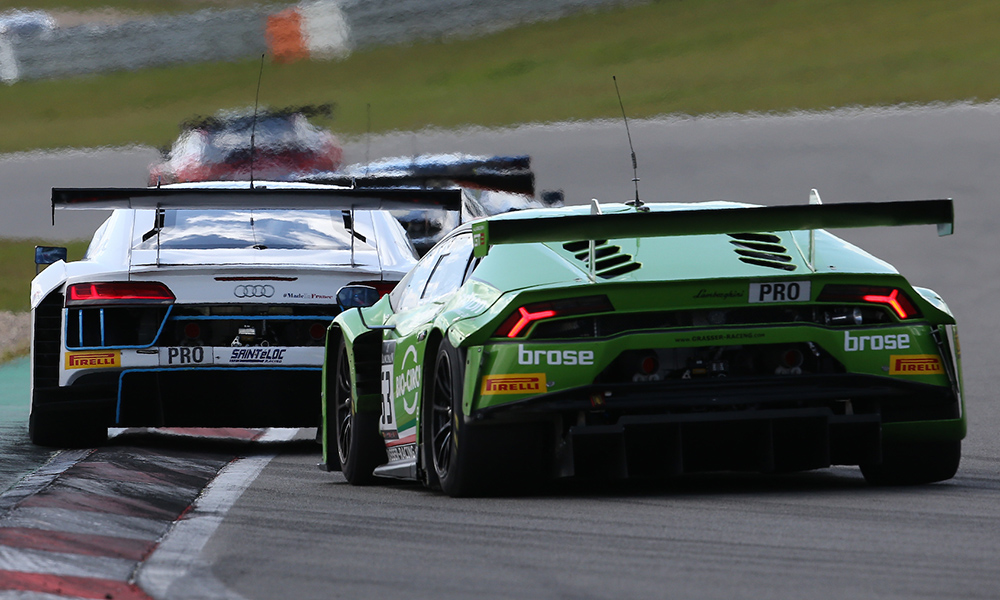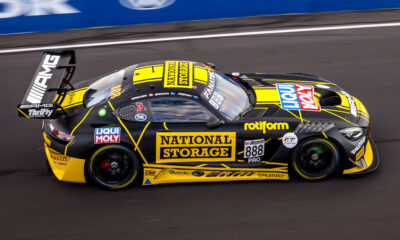
Photo: Vision Sport Agency
Stephane Ratel says the FIA’s newly imposed manufacturer production requirement for GT3 cars is “essential” for the platform’s future, amid increased costs and recent limited production runs.
Under the new rule, each GT3 manufacturer is required to build at least ten race cars within the car’s first year of homologation, with 20 models needed to be produced within the first 24 months.
Ratel believes the build requirements will help encourage manufacturers to provide full customer support networks and not limit production to its so-called designated teams only.
“It’s essential,” Ratel told Sportscar365. “All of the series can die of over-professionalism.
“The sense of GT3 is customer racing. If you lose that, it’s over, especially when the FIA has an excellent category for manufacturer racing, and that’s GTE.
“If you only want to build six, eight cars, then do a GTE car. It’s not that much different these days. Then you can run in WEC and IMSA.
“But if you want to come to GT3 racing, you have to build your customer racing department, you’ve got to build 20 cars, you’re going to have support [them with] all that Audi and Mercedes and the others have done.
“That’s the game you have to play if you want to be in GT3 racing.”
Ratel said that all of the current GT3 manufacturers that have existing homologations have already met the criteria.
The biggest exception had been Cadillac, which produced just three of its ATS-V.Rs, for use in Pirelli World Challenge, although its factory program has since come to an end.
“I can assure you we looked at numbers and they all produced [the minimum],” Ratel said.
“Even the first ones, [such as] the Aston Martin DBRS9, [chassis] 22 and 23 were the last two Astons produced. Bentley did 27 cars without the obligation. The first Nissan [GT-R NISMO GT3] did 22 or 23 cars.
“All the existing GT3 cars that have were homologated to date have done [the requirement] with the exception of one, and of the new homologation I won’t name, they’ve all done over 20 cars.”
Ratel indicated smaller-scale constructors such as Callaway would be exempt from the new rule as they fall under a “tuner homologation.”
“The rest of the cars have been built in significant numbers,” he said. “It has to continue like this because otherwise, it’s clear we’re back to GT1.
“Then you’ll have factory programs of two cars in Super GT, two cars in IMSA, two cars in ADAC or Blancpain, and that’s it, game over, which is not what we want.”
Small Manufacturers Still Welcome in GT4
Ratel said small constructors will continue to be embraced in GT4, with no production requirements to be established for low-volume producers such as KTM, SIN and Ginetta.
“In GT4 you have smaller constructors,” he said. “That’s the idea.
“You can’t tell SIN you need to build 20 cars. That’s what makes the difference. In GT4, we will continue to welcome the smaller constructors that come.”
Unlike GT3, which is sanctioned by the FIA, GT4 is regulated directly by the SRO, under national homologations from the Royal Automobile Club of Belgium.
“GT3 is mainly regulated by a roundtable of engineers,” Ratel said. “I’ve been around this table for 20 years since I’ve been part of the FIA commission meetings.
“At SRO we don’t have a commission. We have a single person who decides [in SRO technical director Claude Surmont].
“We had the scenario last year with an oil tank that was not [GT4 compliant]. Claude said, ‘No.’ A no is a no.
“You control any category in motorsport with the power of saying no. If you can’t [conform], then you can’t come.”

























